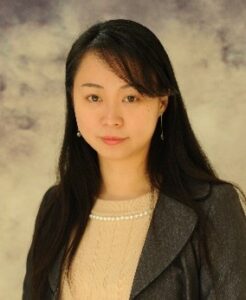Jiabin Zhu, School of Education, Shanghai Jiao Tong University 
How to nurture the new discipline of engineering education? The Chinese engineering education community are actively piloting new efforts around the country.
With the unprecedented development of engineering education scale in China, engineering education research (EER) has attracted greater and broader interest from multiple stakeholders in the Chinese educational and industrial community. According to the international comparative data published by the National Science Foundation in the U.S., China has now boasted the second largest number for Bachelor’s degree recipients in Science and Engineering and the largest number for Ph.D. recipients in Science and Engineering. The large scale of engineering education practices calls for a systematic support from engineering education research.

A report by the editor of Chinese domestic journal for publishing engineering education research-Research in Higher Education of Engineering-has highlighted the significant roles for institutionalized engineering education research. In this report, Prof. Dongsheng Yu pointed out that EER can play a critical role in facilitating the policy-making for engineering educational reform and guiding the transformational pathways for engineering education.
At present, the Chinese Ministry of Education are actively exploring the innovative ways for training excellent engineers. The Chinese Ministry of Education (MoE) initiated the “Plan for Educating and Training Outstanding Engineers” in 2010 and the “Emerging Engineering Education” (EEE) plan in 2017 to produce high-quality engineers with global competitiveness to address the demands of transformation from a labor-intensive to a knowledge-intensive economy. Both plans emphasize advancing educational innovations in engineering education, calling for the use of new teaching and learning methods such as experiential learning, project/problem-based learning, and study abroad.
To support the further reform and exploration of engineering education practices, Prof. Yu put forwards suggestions to establish EER centers and departments across China. By attracting quality EER faculty members and educating graduate students in EER, the institutionalized EER community should pursue both fundamental EER research to develop the discipline of engineering education and application-oriented research to guide the educational practices.
The calling for institutionalized EER has been echoed by quite a few universities and colleges with a strong engineering educational history, such as Tsinghua University. With increased interest and practical needs nationally for EER, the Chinese Ministry of Education has issued a policy in 2022 to pilot the establishment of the Discipline of Engineering Education (DEE) among 10 Chinese universities, including TsingHua University, Zhejiang University, Beihang University, Tianjin University and others. These universities have piloted the establishment of the DEE in the schools of education.
In 2022, representatives from the ten universities have organized the National University Engineering Education Discipline Construction lead by Tsinghua University. The Alliance is expected to mobilize and further develop the national c ommunity for EER. In the 3rd Alliance meeting hosted in Nov. 2023, the vice president of Tsinghua University, Prof. Bin Yang stated that, “The Discipline of Engineering Education has a significant role for the new-round of industrialization in China, the practice of engineering educational reform, and the formation of engineering educational scholarly community”. The first president of the Alliance, Prof. Jian Li, has pointed out in the 3rd Alliance meeting that the Disciplines of Engineering Education has a historical mission for Chinese modernization by helping the development of excellent engineering talents.
ommunity for EER. In the 3rd Alliance meeting hosted in Nov. 2023, the vice president of Tsinghua University, Prof. Bin Yang stated that, “The Discipline of Engineering Education has a significant role for the new-round of industrialization in China, the practice of engineering educational reform, and the formation of engineering educational scholarly community”. The first president of the Alliance, Prof. Jian Li, has pointed out in the 3rd Alliance meeting that the Disciplines of Engineering Education has a historical mission for Chinese modernization by helping the development of excellent engineering talents.
 Against this context, multiple universities have piloted various efforts in EER. One of the examples took place in Shanghai Jiao Tong University. The transition between high school and undergraduate studies has been a difficult time for engineering students. These difficulties originate from the absence of suitable engineering curriculum and learning activities in the high school, middle school and primary school stages. To address this major challenge, the School of Education at Shanghai Jiao Tong University has set up an initiative to research on the relevant topics. The establishment of a center on engineering education for high/middle schools and primary schools has signified the kick-off of these efforts.
Against this context, multiple universities have piloted various efforts in EER. One of the examples took place in Shanghai Jiao Tong University. The transition between high school and undergraduate studies has been a difficult time for engineering students. These difficulties originate from the absence of suitable engineering curriculum and learning activities in the high school, middle school and primary school stages. To address this major challenge, the School of Education at Shanghai Jiao Tong University has set up an initiative to research on the relevant topics. The establishment of a center on engineering education for high/middle schools and primary schools has signified the kick-off of these efforts.
To conclude, additional efforts are blooming nation-wide around EER and the establishment of the Discipline of Engineering Education in China. The scholarly communications around EER are growing with an unprecedented opportunity along with the fast development of Chinese engineering education. Meanwhile, many of these research and piloting practices will require devoted and concerted efforts from faculty members, graduate students, industrial representatives and other stakeholders, and a long time of testing to examine their effectiveness. The fast development of EER globally is now looking forward to a Chinese way of developing engineering education research and the discipline of engineering education.
